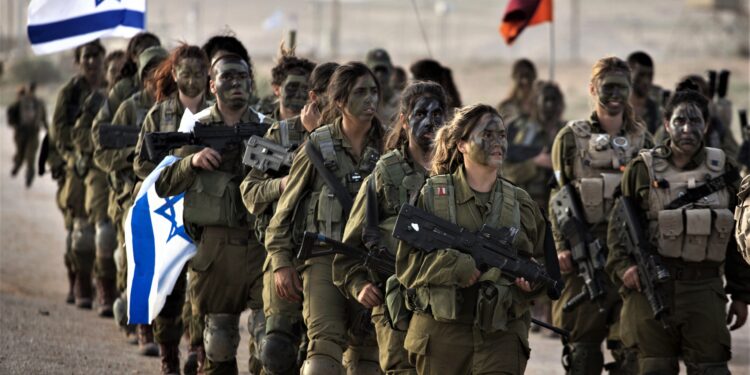By John Ikani
Israel, since its inception in 1948, has been no stranger to turmoil in the Middle East. Here’s a comprehensive timeline of the key conflicts that have defined its complex history.
1948 Arab-Israeli War
In 1947, tensions flared as the United Nations recommended the partition of British Mandatory Palestine into separate Jewish and Palestinian states. This led to clashes between Palestinians and Jewish militias, notably the Haganah, which later evolved into the Israel Defense Forces. On May 15, 1948, one day after declaring independence, Israel found itself at war with Egypt, Syria, Iraq, Lebanon, and Transjordan (later Jordan). The war concluded almost a year later, reshaping the region, with Israel securing much of the former British Mandate.
1956 Suez Crisis
Israel, in concert with France and Britain, invaded Egypt’s Sinai Peninsula on October 29 to counter Egyptian leader Gamal Abdel Nasser’s nationalization of the Suez Canal. The incursion came to a halt under the weight of US and Soviet pressure.
1967 Six-Day War
Building regional tension erupted when Israel faced assaults by Palestinian militants based in Syria, Lebanon, and Jordan. On June 5, Israel launched preemptive strikes on Egypt, Syria, and Jordan, responding to Egypt’s military buildup in Sinai and the closure of the Suez Canal to Israeli ships. Israel emerged victorious by June 10, gaining control of Sinai, the West Bank, Gaza, the Golan Heights, and over a million newly occupied Palestinians.
1973 Yom Kippur War
On October 6, Egypt and Syria launched a surprise offensive to regain lost territories, with Egypt overwhelming Israel’s fortifications along the eastern Suez Canal. Saudi Arabia initiated an oil boycott in support of the war effort. While Israel retained control of the Sinai Peninsula, the conflict eventually led to negotiations and the 1979 signing of the Camp David Peace Accords.
1978 Invasion of Lebanon
In response to attacks by the Palestine Liberation Organization (PLO), which had relocated to Lebanon from Jordan after a civil war, Israel invaded southern Lebanon in March. After pushing the PLO away from the border, Israel withdrew within a week.
1982 Invasion of Lebanon
Israel invaded Lebanon again following cross-border clashes with the PLO, leading to the siege of Beirut and the exile of PLO leadership to Tunisia. Israel maintained control over southern Lebanon for nearly two decades.
1987 Palestinian Intifada
Protests erupted across the West Bank and Gaza, evolving into a sustained uprising following Israel’s biggest intelligence failure since the 1973 war. US and Norwegian mediation eventually resulted in the 1993 Oslo Accords between Israel and the PLO.
1996 Lebanon War
Israel launched a major offensive against the Lebanese militant group Hezbollah on April 11. This followed Hezbollah’s sustained guerrilla campaign against Israeli occupation in southern Lebanon. The three-week offensive, called Operation Grapes of Wrath, ended inconclusively, and Israel withdrew from Lebanon four years later.
2000: The Second Intifada
A visit by future Prime Minister Ariel Sharon to the Temple Mount, the site of the al-Aqsa Mosque, in September 2000 sparked Palestinian protests that escalated into a second uprising. Palestinian militant groups launched a sustained campaign of suicide bombings, while Israel responded with a crackdown.
2005 Gaza Withdrawal and Palestinian Civil War
In 2005, Israel withdrew from Gaza, and Hamas won elections a year later, triggering a civil war between Hamas and the losing Fatah party, which ended in 2007 with Hamas taking control of Gaza. Israel and Egypt imposed border restrictions in response, further intensified after Hamas kidnapped an Israeli soldier.
2006 Lebanon War
After Hezbollah militants kidnapped two Israeli soldiers in a cross-border raid, Israel launched an offensive in Lebanon. The 34-day conflict resulted in hundreds of Lebanese and dozens of Israeli casualties, marked by sustained rocket fire on Israel—a tactic later employed by Hamas.
2008 Gaza War
Tensions between Hamas and Israel escalated with sporadic rocket fire, culminating in Israel’s air and ground assault on Gaza, known as Operation Cast Lead. Hamas fired hundreds of rockets into Israel during the three-week conflict, resulting in over 1,000 Palestinian and 13 Israeli casualties.
2014 Israel-Gaza War
In July, simmering tensions erupted into war as Israel initiated an air and ground offensive against Hamas in Gaza after the group fired numerous rockets into Israel. The month-and-a-half-long conflict saw casualties on both sides.
2021 Conflict
An 11-day conflict erupted when Hamas fired rockets at Israeli cities and towns after weeks of tension in and around Jerusalem. Israel responded with air strikes and artillery bombardments on Gaza, as Hamas launched thousands of rockets into Israel. The unexpected scale and scope of the violence led to communal strife between Arab Israelis and Jews within Israel, as well as widespread unrest in the occupied West Bank. Egypt, alongside the US and Qatar, eventually brokered a ceasefire, bringing an end to the conflict.


































